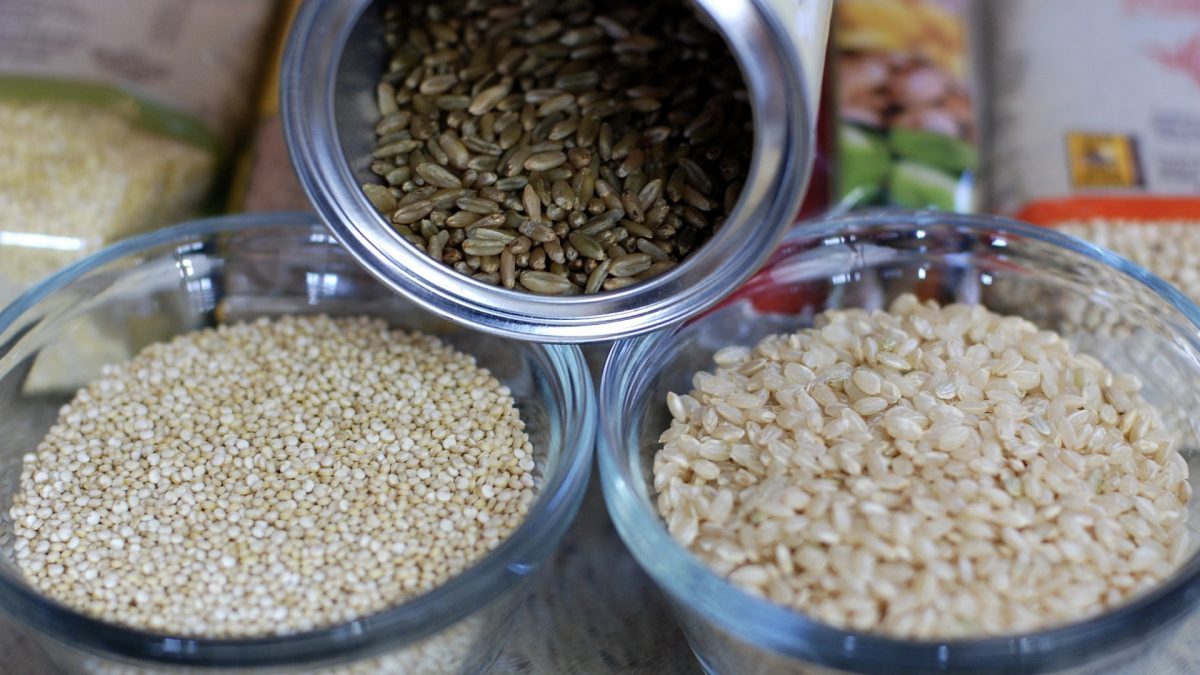We live in an “obesogenic environment,” with cheap junk food everywhere, thanks in part to subsidies going to the “‘food industrial complex,’ which manufactures obesogenic foods that foster addiction…The root causes…[may] make obesity difficult to escape,” but a lot of people do. If it were simply the external environment, why isn’t everyone obese?
“Some individuals seem to be more susceptible to the obesogenic environment…than others,” which suggests a genetic component, supported by studies of twins and adopted kids, but the genes that have been identified so far account for only 6 to 11 percent of the genetic variation in body mass index between individuals. Perhaps variation in our “other genome”—that is, all the different microbes that inhabit our body, known as the microbiome—may be playing a role. We have a hundred times more bacterial genes inside us than human genes.
As I discuss in my video Gut Microbiome: Strike It Rich with Whole Grains, a study found that people tend to fall into one of two groups: those who have lots of different types of bacteria in their gut (high “gut bacterial richness”) and those with relatively few types. Those with low bacterial richness had more overall body fat, insulin resistance, which is the cause of type 2 diabetes, high triglycerides, and higher levels of inflammatory markers, like C-reactive protein, compared to those with high bacterial richness. Not only did people with lower bacterial richness start out heavier, but the obese individuals with lower bacterial richness also gained more weight over time.
The question then becomes: Can a dietary intervention have any impact “A number of studies have associated increased microbial richness…with diets higher in fruits, vegetables, and fiber.”
Just giving fiber-type supplements doesn’t seem to boost richness, however, but the “compositional complexity” of a whole food, like whole grains, “could potentially support a wider scope of bacterial taxa,” types of bacteria, “thereby leading to an increase in diversity.” Human studies to investigate the effects of whole grains had been neglected, though…until now.
Subjects were given whole-grain barley, brown rice, or a mixture of both for a month, and all three caused an increase in bacterial community diversity. Therefore, it may take a broad range of substrates to increase bacterial diversity, and this can be achieved by eating whole plant foods.
Moreover, the alterations of gut bacteria in the study coincided with a drop in systemic inflammation in the body. We used to think that the way fiber in whole grains helped us was by gelling in our small intestine right off of our stomach, slowing the rate at which sugars were absorbed and blunting the spike in blood sugars one might get from refined carbs. We now know, however, that fiber is broken down in our colon by our friendly flora, which release all sorts of beneficial substances into our bloodstream that can have anti-inflammatory effects, as well. So, perhaps what’s happening in our large intestine helps explain the protective effects of whole grain foods against type 2 diabetes.
Interestingly, the combination of both barley and brown rice worked better than either grain alone, suggesting a synergistic effect. This may help explain “the discrepancy of the health effects of whole grains obtained in epidemiological [population-based] and interventional studies.”
Observational studies “strongly suggest” that those who consume three or more servings of whole grains a day tend to have a lower body mass index, less belly fat, and less tendency to gain weight, but recent clinical trials, where researchers randomized subjects to eat white bread rolls versus whole-wheat rolls, failed to provide evidence of a beneficial effect on body weight. Of course, whole grains are so superior nutritionally that they should continue to be encouraged. However, the “[i]nterventional trials might have failed to show [weight] benefits because they focused on a limited selection of whole grains, while in epidemiological trials [or the population studies], subjects are likely to consume a diverse set of whole grains which might have synergistic activities.”
Until recently, we knew very little about how powerfully our gut bacteria can affect our health. Catch up on the latest science with these related videos:
- How to Convert Into an Equol Producer
- Culture Shock: Questioning the Efficacy and Safety of Probiotics
- Is Candida Syndrome Real?
- How to Become a Fecal Transplant Super Donor
- Is Obesity Infectious?
- Microbiome: The Inside Story
- Prebiotics: Tending Our Inner Garden
- What’s Your Gut Microbiome Enterotype?
- How to Change Your Enterotype
- Paleopoo: What We Can Learn from Fossilized Feces
- Gut Dysbiosis: Starving Our Microbial Self
When it comes to rice, even white rice can be better than many choices, but brown rice is better and pigmented rice is probably the best. See my videos Kempner Rice Diet: Whipping Us Into Shape and Is It Worth Switching from White Rice to Brown? for more.
But what about the arsenic in rice? Learn more:
- Do the Pros of Brown Rice Outweigh the Cons of Arsenic?
- How to Cook Rice to Lower Arsenic Levels
- How Much Arsenic in Rice Is Too Much?
- Arsenic in Infant Rice Cereal
- Which Brands and Sources of Rice Have the Least Arsenic?
- How Risky Is the Arsenic in Rice?
- Where Does the Arsenic in Rice, Mushrooms, and Wine Come from?
In health,
Michael Greger, M.D.
PS: If you haven’t yet, you can subscribe to my free videos here and watch my live, year-in-review presentations:
- 2012: Uprooting the Leading Causes of Death
- 2013: More Than an Apple a Day
- 2014: From Table to Able: Combating Disabling Diseases with Food
- 2015: Food as Medicine: Preventing and Treating the Most Dreaded Diseases with Diet
- 2016: How Not To Die: The Role of Diet in Preventing, Arresting, and Reversing Our Top 15 Killers
